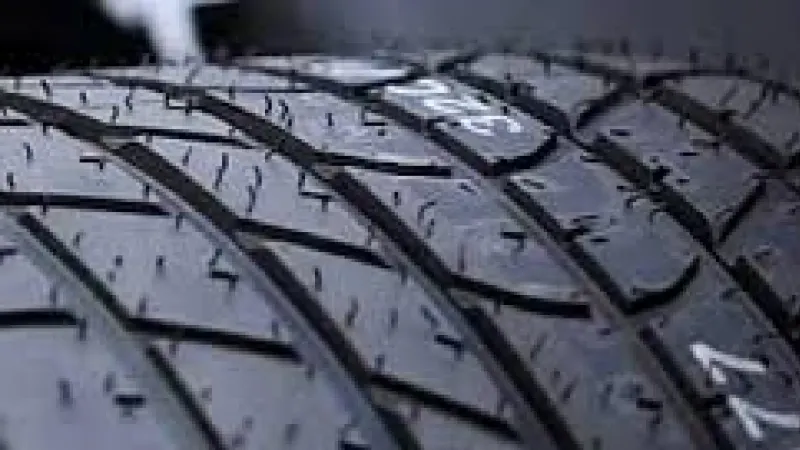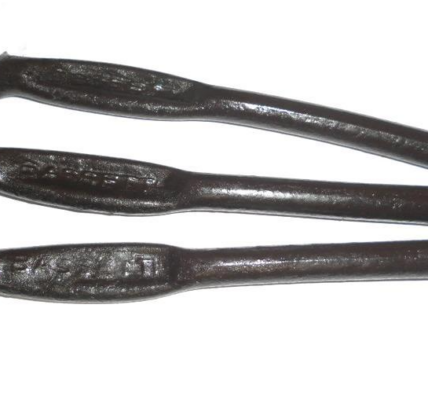Have you ever noticed the tiny rubber spikes sticking out from your car or bike tires and wondered what they’re for? You’re not alone! Many people see these spikes and assume they’re just a random quirk of tire design. However, these small, seemingly insignificant protrusions—known as vent spikes—actually serve an important purpose. Let’s dive deep into the world of vent spikes and uncover the critical role they play in tire performance and safety.
What Are Vent Spikes?

Vent spikes are the small, thin rubber protrusions that you often find on new tires. While they might seem like leftover pieces of rubber from the manufacturing process, vent spikes are actually a byproduct of tire production and serve as an indicator of a tire’s quality.
These spikes aren’t defects, nor are they decorative. They’re the result of air being vented from the tire mold during the manufacturing process. In fact, they help ensure the tire maintains the right structure and consistency as it’s being formed. Let’s break down their true significance and how they contribute to your tire’s performance.
How Vent Spikes Are Formed: The Manufacturing Process
Vent spikes come into existence during the tire’s production. Tires are made using a process called vulcanization, where rubber is molded and heated to give it strength and durability. As the tire’s rubber compound is injected into the mold, air needs to escape to avoid bubbles or weak spots. Tiny holes in the mold, called vent holes, allow trapped air to escape, and the excess rubber that is squeezed into these holes forms the vent spikes.
Once the tire is removed from the mold, these rubber spikes remain attached and can be trimmed off, but they often aren’t because they don’t affect the tire’s functionality. This is why you’ll frequently see them on new tires. The vent spikes act as tiny vents, allowing the air that would otherwise be trapped to escape during production, ensuring a smooth and solid tire structure.
Clearing Up Misconceptions About Vent Spikes
There are a few myths and misconceptions surrounding vent spikes, so let’s address them:
- Myth: Vent spikes are purely decorative.
Fact: Vent spikes are not for show; they are a natural byproduct of the tire molding process. While they don’t serve a purpose once the tire is in use, their presence indicates that the manufacturing process went smoothly and that the tire was produced with attention to detail. - Myth: Only specific tires have vent spikes.
Fact: Vent spikes are found on many types of tires, from car tires to bike tires. While some manufacturers may trim them off for aesthetic reasons, it’s common to see them on a wide range of tire brands and models. - Myth: Vent spikes need to be removed for safety reasons.
Fact: There is no need to remove vent spikes from your tires. They do not affect performance once the tire is in use. They will naturally wear away as the tire makes contact with the road over time.
The Role of Vent Spikes in Tire Quality
While vent spikes themselves do not directly impact tire performance, they are a visible sign that the tire was made using the proper manufacturing techniques. The fact that vent spikes are present tells you that the tire mold was properly vented, ensuring that no air pockets formed within the rubber. These small protrusions are a sign that the tire was produced with precision and care, contributing to its overall reliability.
When you see vent spikes on new tires, it’s a sign that the tire has gone through a rigorous process designed to ensure maximum durability. This speaks to the quality of the manufacturing process, giving you peace of mind that the tire was crafted to perform reliably on the road.
The Importance of Proper Air Pressure in Tires
While vent spikes are mainly tied to the manufacturing process, they indirectly remind us of the importance of maintaining proper air pressure in tires. Correct air pressure is crucial for ensuring that your tires perform safely and efficiently. Overinflated or underinflated tires can lead to uneven tread wear, reduced fuel efficiency, and even dangerous blowouts.
Vent spikes themselves don’t regulate tire pressure, but they remind us of how meticulous the tire-making process is and the need for properly inflated tires to ensure safety on the road. Always make sure to check your tire pressure regularly and keep it at the recommended levels specified by your vehicle’s manufacturer.
How Vent Spikes Reflect Tire Safety and Performance
Tire safety is paramount, and while vent spikes don’t actively contribute to safety after the tire is on the road, their existence reflects a well-made tire. A properly manufactured tire is essential to ensuring your vehicle’s performance and the safety of everyone on the road.
Here’s how vent spikes tie into tire safety:
- Structural Integrity: Vent spikes indicate that the tire was properly vented during manufacturing, meaning the rubber is solid and free from any weak spots or air pockets. This ensures the tire can withstand the demands of driving, from daily commutes to long road trips.
- Tire Longevity: Tires made with precision, like those with vent spikes, are built to last. A well-made tire will not only perform better but also wear more evenly over time, saving you money on replacements.
- Reduced Risk of Blowouts: A tire with proper structural integrity is less likely to experience issues like blowouts, which can be caused by weak spots in the rubber. Blowouts, especially at high speeds, can be incredibly dangerous, so it’s essential to have tires that are built to handle the pressure.
Why Vent Spikes Are Still Visible on New Tires

You might wonder why tire manufacturers don’t simply trim off the vent spikes after production. In most cases, the spikes are left in place because they don’t affect tire performance, and they will naturally wear away as you drive. Removing them would add unnecessary labor and cost without any added benefit.
Plus, some tire buyers actually look for vent spikes as an indicator that the tire is new and has not been used or handled extensively before purchase. It’s a subtle yet clear sign that the tire came straight from the manufacturing line.
Conclusion: The Hidden Significance of Vent Spikes on Your Tires
While vent spikes might seem like a quirky design feature, they serve as important indicators of a tire’s manufacturing quality. These small, rubbery spikes are a byproduct of the tire production process and show that the tire was properly vented and formed, ensuring it has the structural integrity to perform well and last for many miles.
The next time you see those little rubber spikes on your new tires, you’ll know they’re more than just an odd feature—they’re a sign of a well-made tire designed to keep you safe on the road. So, the next time you shop for tires, those vent spikes should give you confidence that your tires were made with precision and care, ready to handle whatever the road throws your way.




